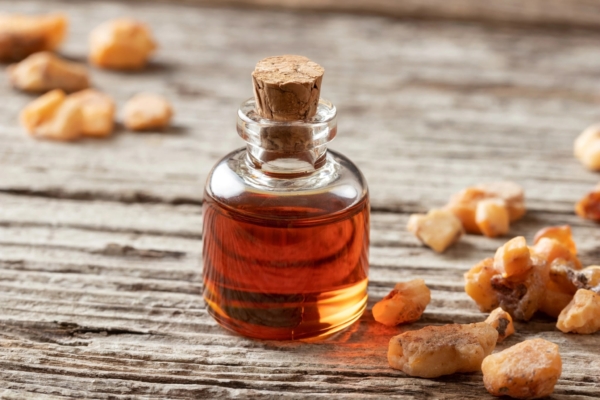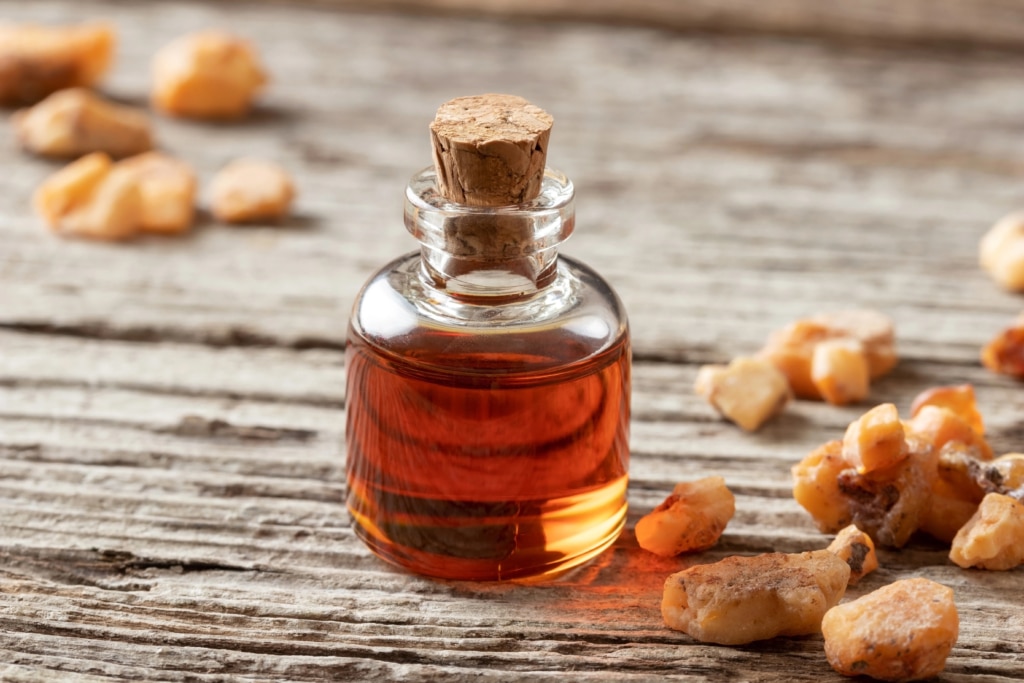
Imagine something that looks like a beautiful golden rock, but upon closer inspection, you're greeted with sweet, balsamic, resinous notes, with hints of vanilla that feel like a warm embrace. This is the beauty of Benzoin – an enchanting tree resin that has captivated perfumers, healers, and ritualists for thousands of years.
Benzoin resin holds within it a sensory journey that bridges ancient temples and modern apothecaries. It’s the rich, creamy base note that lingers in natural perfumes, the soothing aroma that fills sacred incense smoke, and a time-honored remedy for calming the heart and easing the breath. From the fragrant markets of the ancient world to the handcrafted incense blends of today, Benzoin has been cherished as a powerful aromatic, beloved for its sweetly grounding and comforting presence.
In this article, we’ll explore the magnetic world of Benzoin resin: what it is, where it comes from, and why it has remained a staple in the aromatic traditions of so many cultures. You’ll discover its history across the aromatic arts, its versatile applications in sacred incense and natural perfumery, and how Benzoin resin benefits the mind, body, and soul. We’ll also share practical tips on how to work with Benzoin. So whether you're a curious beginner or a seasoned aromatic artisan, prepare to fall in love with this sugary, golden gem of the resin world.
What is Benzoin Resin?
Benzoin is the life-giving resin of Styrax trees, particularly Styrax benzoin and Styrax tonkinensis, large, tropical deciduous shrubs native to the lush, humid landscapes of Southeast Asia. Most of the world’s Benzoin is sourced from the misty highlands of Sumatra and Java, where generations of harvesters have perfected the delicate art of resin tapping.
These trees can tower up to 115 feet tall, their branches adorned with pale, ovate leaves, velvety to the touch, and clusters of silky white blossoms that perfume the air with a subtle sweetness. After flowering, they bear round, two-inch fruits holding glossy seeds within. Yet, it’s beneath their bark, wrapped in a soft, whitish down, where the true treasure lies: the aromatic resin that has been revered for centuries.
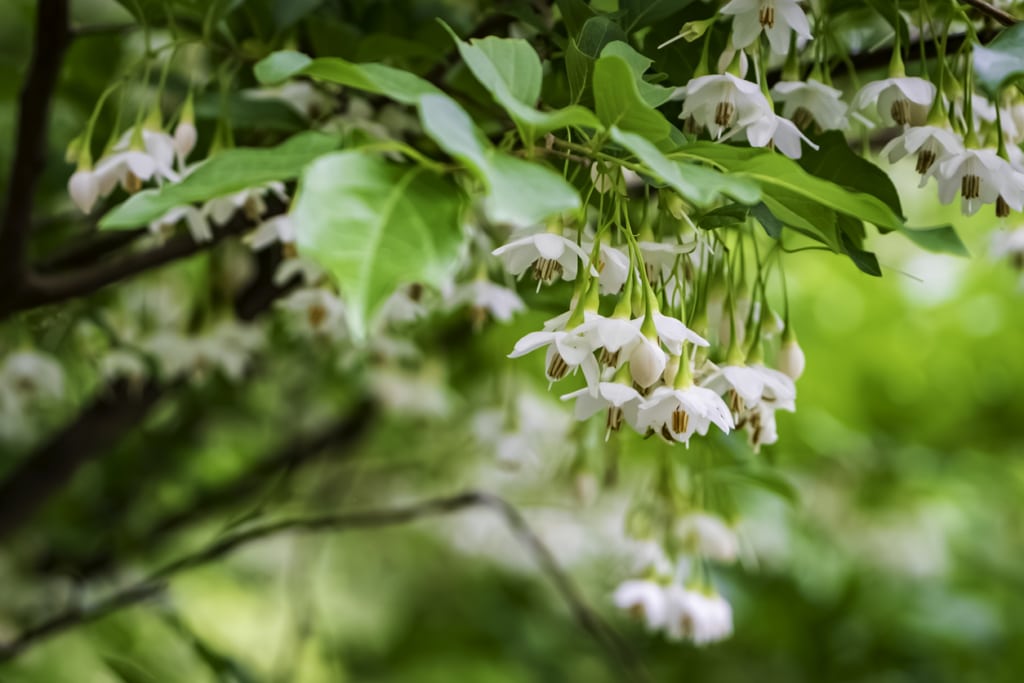
Benzoin is an “exudation,” a healing response by the tree when its bark is gently wounded. When a Styrax tree reaches about 7 years of age, skilled harvesters make deliberate incisions in the bark, often cutting deep triangular grooves with a hatchet or knife. From these wounds, a viscous, yellowish-white sap begins to flow, slowly hardening over days and weeks as it meets the air into beautiful resinous tears.
The first few years of tapping produce the richest yields, with the resin flowing most abundantly during this time. However, the tree’s life cycle is relatively short in cultivation; it often ceases production and dies before reaching 17 years of age. To support the young trees in their early years, farmers sometimes plant them alongside upland rice, allowing the tall, swaying grains to offer shade and protection.
Once harvested, the fresh Benzoin resin may undergo processing, commonly treated with solvents like alcohol to create a lighter, more fluid resinoid for perfumery and aromatherapy. For those seeking the pure, unadulterated essence of this ancient aromatic, it’s essential to research your sources and choose Benzoin that has been minimally processed [1].
In its raw form, Benzoin exudes an alluring scent – sweet and balsamic, with creamy vanilla undertones and a whisper of warm spice. It’s this enchanting aroma that has cemented Benzoin’s place in the temples, perfumeries, and apothecaries of countless cultures through history.
History & Traditional Uses of Benzoin Resin
The story of Benzoin resin weaves its way through the spiritual and medicinal realms of ancient civilizations across Egypt, China, India, and the Middle East, where its honeyed, balsamic aroma was treasured as both a sacred aromatic and a potent remedy. The name Benzoin comes from the Arabic “luban-jawi,” meaning “incense from Java,” a nod to its rich Southeast Asian heritage and the ancient trade networks that carried its fragrant treasures across continents [1]. In Medieval Europe, it became known as “Gum Benjamin,” a key ingredient in Friar’s Balsam, a famed tincture used for respiratory and skin ailments [1].
In sacred rituals, Benzoin’s role was profound. Hindu and Buddhist temples filled their sanctuaries with its grounding smoke, believing it sharpened focus, calmed the mind, and purified the spirit, essential for deep meditation and devotional practices. Its natural fixative properties made it a prized ingredient in temple incense blends, helping delicate aromatic notes linger in the air, enhancing the spiritual atmosphere.
The resin’s journey into the Mediterranean began around 500 B.C.E., when Phoenician traders introduced Benzoin to ancient Greece, Rome, and Egypt. There, it was blended into exquisite perfumes, luxurious potpourris, and ceremonial incenses. Among the aristocracy and royalty, Benzoin was often exchanged as a lavish gift, a symbol of reverence, affection, and even political alliance.
Traditional medicine systems across Asia and the Middle East called upon Benzoin for its many virtues. In Ayurveda, Traditional Chinese Medicine (TCM), and folk remedies from Persia to Indochina, Benzoin was traditionally used for its ability to ease respiratory ailments, soothe inflamed skin, and calm emotional unrest. During the Middle Ages, its use spread through Europe, where it earned the name “baume pulmonaire” (pulmonary balsam) in France. Healers would burn Benzoin near ailing patients, encouraging them to inhale the resinous fumes as a remedy for coughs, infections, and respiratory distress [2]. Ayurvedic physicians have commonly used Benzoin to relieve shingles, ringworm, and various skin afflictions, valuing its soothing, antiseptic properties.
Benzoin’s legacy even extends to Christian rituals. It remains a key ingredient in many church incenses across Western Europe and Russia, lending its warm aroma to sacred ceremonies [2]. Beyond incense, the resin has found its way into a surprising variety of modern products, from chewing gum and cosmetics to perfumes, cigarettes, gelatin, and even food flavorings [2].
Legends from the ancient world also speak of Benzoin’s protective magic. During the harvest of Frankincense, resin gatherers believed poisonous flying snakes guarded the sacred trees. To ward off these serpents, they would burn Benzoin, inviting the thick, aromatic smoke to drive away the dangers while they collected their precious harvests [2].
Benzoin Resin Benefits
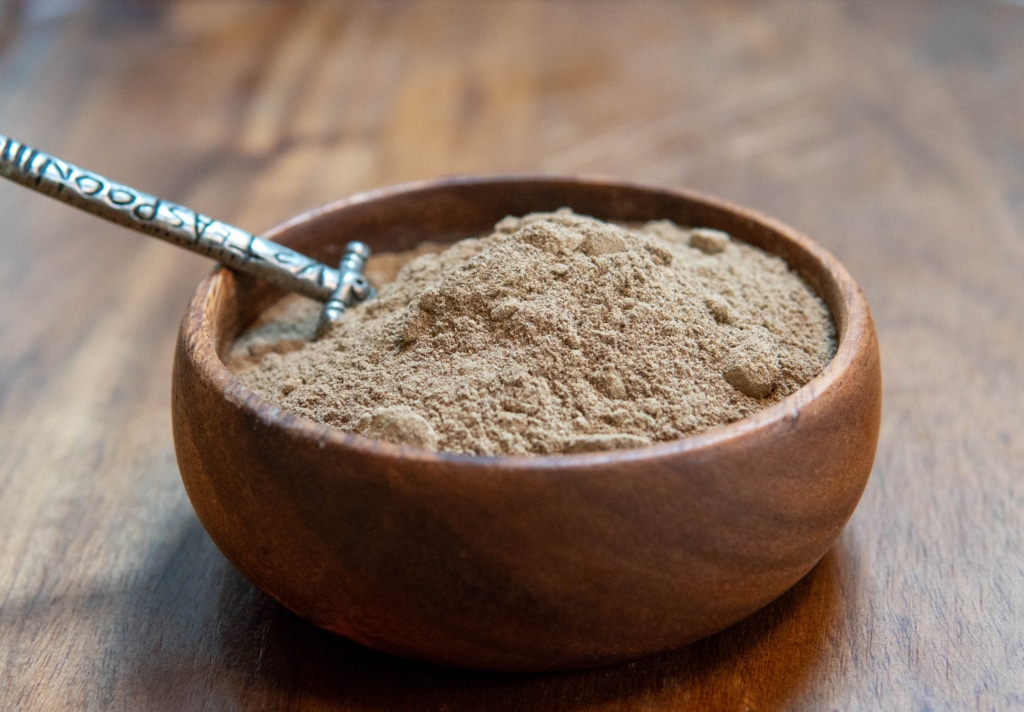
Benzoin Resin Benefits for Mental & Emotional Health
Benzoin resin has long been used for its profound positive effects on mental and emotional well-being, offering a settling balm for restless minds and weary hearts. Its natural sedative properties help ease anxiety, alleviate stress, and promote restful sleep, making it a beloved ally for meditation, prayer, and moments of deep contemplation [2].
Aromatherapist Gabriel Mojay beautifully describes Benzoin resin’s effect, stating, “Rich, sweet, and comforting, Benzoin softens the mind’s ‘sharp edges’, and gently ‘grounds’ awareness abstracted by troubled thoughts,” noting its particular usefulness for nervous anxiety worsened by exhaustion [1]. Whether diffused to uplift the mood, burned in incense to encourage dreaming, or inhaled to restore a sense of calm presence, Benzoin is a gentle yet powerful support during times of emotional upheaval and spiritual journeying.
Benzoin Resin Benefits for Respiratory Support
Benzoin resin has a long-standing reputation as a powerful respiratory remedy, prized for its warming expectorant and anti-inflammatory properties that soothe coughs, bronchitis, sore throats, laryngitis, asthma, and chest congestion. In TCM, Benzoin is used to address respiratory ailments caused by cold and damp conditions in the lungs, thanks to its warming and drying nature.
It has held a place of high regard in Islamic medicine, where it is valued for its ability to clear phlegm and ease breathing difficulties. In France, medical practitioners once prescribed burning Benzoin resin to relieve bronchitis, hoarseness, and persistent coughs. This tradition lives on today in the form of “pastilles,” tasty lozenges infused with Benzoin that are commonly used to ease colds, flus, and other respiratory illnesses [2].
Benzoin Resin Benefits for Skin Care
Like many aromatic resins, Benzoin is known to have antiseptic, antibacterial, and astringent properties, making it a helpful remedy for soothing irritated skin, small wounds, and cuts. Traditionally applied externally to calm conditions like psoriasis, eczema, and blistered skin, Benzoin has long served as a natural disinfectant in first aid, helping to cleanse and protect minor injuries [2].
Its skin-healing virtues extend beyond human care, as it is also used in veterinary medicine in various parts of the world [2]. Additionally, Benzoin’s natural preservative and fixative qualities have made it a prized ingredient in balms, salves, soaps, perfumes, and creams, where it not only enhances fragrance longevity but also supports the stability and shelf life of the formulations.
Benzoin Resin Benefits in the Energetic/Spiritual Realm
Benzoin remains a beloved mainstay in sacred ceremonies for its protective, grounding, and purifying energies, commonly used in spiritual practices across cultures. In Buddhism, Christianity, Islam, and various magical and esoteric traditions, Benzoin is burned to cleanse spaces, sharpen mental focus, and enhance connection to the divine. During shamanic journeying, it is believed to shield the spirit from harmful entities or energies that may seek to attach to the traveler in the unseen realms. In Wiccan and other magical ceremonies, Benzoin’s warm, sweet smoke is often used during long rituals to maintain mental clarity, deepen awareness, and support emotional cleansing, creating a sacred atmosphere of protection and spiritual attunement [2].
How to Use Benzoin Resin
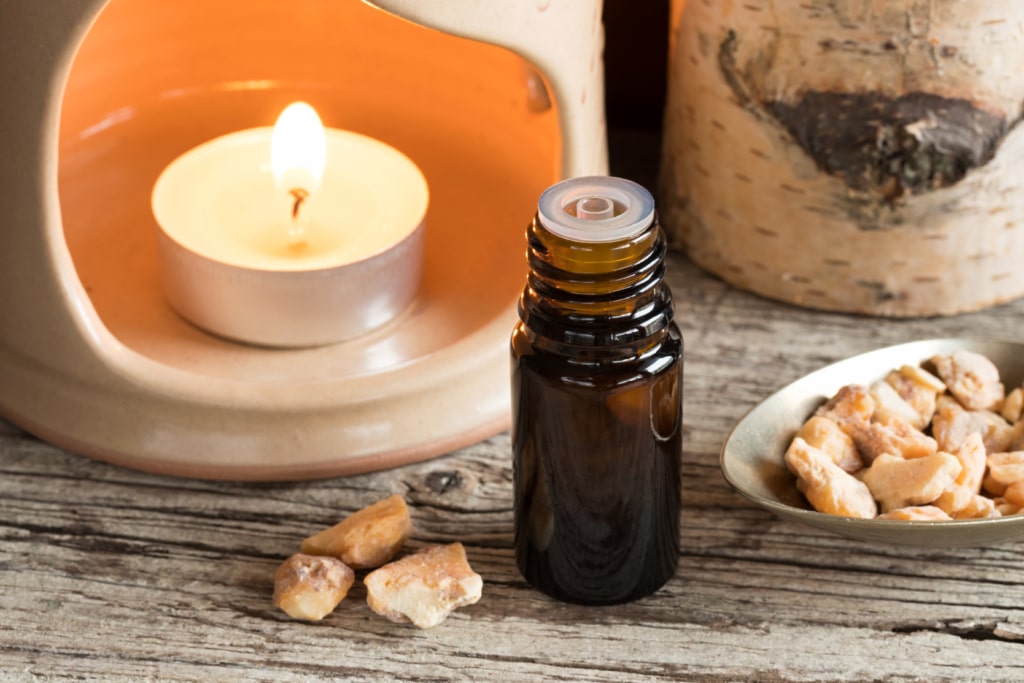
Benzoin Resin Incense
Benzoin resin is a staple in incense crafting, prized both in loose incense blends and traditional sticks or cones for its rich, caramely aroma and exceptional fixative properties that anchor and enhance other fragrances. Often paired with complementary resins and woods such as Frankincense, Myrrh, Sandalwood, and sweet resins like Copal, Benzoin adds warmth and depth to complex aromatic compositions. Benzoin resin incense can also be burned on its own or sprinkled on natural incense charcoal. Beyond its fragrant allure, it is widely used in rituals for purification and protection, invoking a warm, calming atmosphere.
Benzoin Oil in Natural Perfumery
In natural perfumery, Benzoin resin is a cherished ingredient with a deep-rooted history. In modern fragrance-making, synthetic vanilla and amber notes are often used to imitate Benzoin’s warm, balsamic beauty—hoping to capture the same rich, ambrosial depth it brings to a composition. But in truth, nothing compares to the authentic, grounding presence of real Benzoin resin. Its soothing, resinous aroma serves as a versatile foundation in crafting complex perfume accords, blending beautifully with bright citrus oils, delicate florals, aromatic spices, and grounding woods. This ability to harmonize with a wide range of ingredients makes Benzoin a favorite among perfumers seeking to create balancing yet sophisticated natural scents.
Benzoin Oil for Topical Use
Benzoin resin essential oil is thick and sticky by nature, which can make it challenging to blend directly into carrier oils. (Note: Avoid applying essential oils directly to the skin. To learn more, read our Essential Oil Safety Guide.) Benzoin resin oil performs beautifully when incorporated into richer formulations like creams, body butters, lotion bars, and soaps. One of the most effective ways to enjoy Benzoin’s soothing benefits topically is by infusing the raw resin into a carrier oil, creating a luxurious body oil or a deeply nourishing balm.
Interested in mastering this craft? Don’t miss our free Botanical Resins Workshop Series, now streaming for a limited time – your perfect guide to making resin-infused oils and balms at home! Click here to watch the free lessons now.

This Benzoin resin profile is an excerpt from our Botanical Resins & Gums Course, an in-depth program that dives into the art and science of crafting with incense resins.
In the course, you’ll learn how to:
✨ Craft soothing resin salves for injuries, inflammation, and faster recovery
✨ Blend immune-boosting tinctures to fight colds, flus, and infections
✨ Elevate your skincare with anti-aging, rejuvenating resin infusions
✨ Create incense, perfumes, and fragrant blends that nourish both body and spirit
Ready to turn resins into your most magical creations yet?
Benzoin Resin Plant Profile
Latin Name: Styrax benzoin
Common Names: Storax, Gum Benjamin, Sumatra Benzoin, Loban, Kemenyan
Family: Styracaceae
Parts Used: resin
Aroma: sweet, balsamic, resinous, rich, hints of vanilla
Body System Affiliation: respiratory, immune, nervous, circulatory, skin
Energetic Effects & Actions: analgesic, anesthetic, antibacterial, anti-depressant, anti-infectious, anti-inflammatory, anti-septic, antispasmodic, antiviral, astringent, calmative, carminative, cephalic, cicatrizant, diuretic (mild), expectorant, fixative, insecticide, pectoral, preservative, rejuvenator, sedative, stimulant (circulatory, mild), uplifting, vermifuge, vulnerary
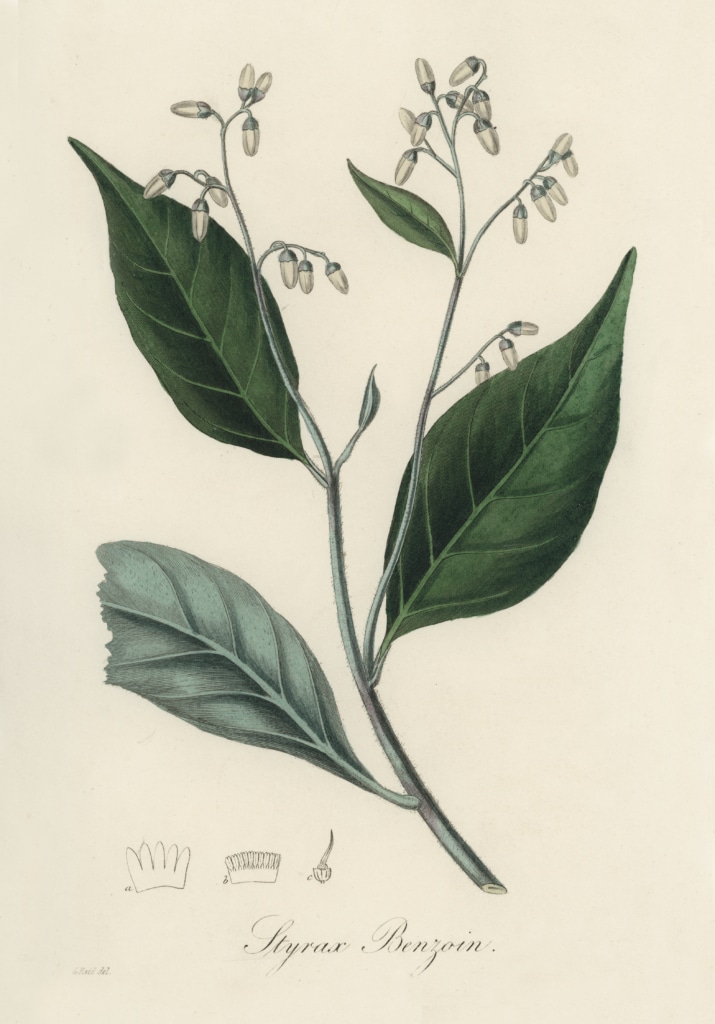
Cautions
Benzoin should only be used internally under the guidance of a qualified herbalist or medical professional. Pregnant women and children should consult their healthcare provider before using Benzoin in any form, whether topically, internally, or through inhalation. Always perform a patch test before applying to the skin to check for sensitivity or allergic reactions. If irritation occurs, discontinue use immediately.
References
1. Mojay, Gabriel. (1997). “Aromatherapy for Healing the Spirit: Restoring Emotional and Mental Balance with Essential Oils.” Healing Arts Press. Rochester, Vermont.
2. Sylliaasen, Evan. (2019). “Materia Aromatica: An In-depth Guide to the Traditional Ritual, Aesthetic, and Medicinal Uses of the 20 Most Common Incense Plants.” NW School of Aromatic Medicine Ebook. Chimacum, Washington.
Article Written By Melissa Szaro

© 2025 The Northwest School of Aromatic Medicine. All rights reserved.
*The statements above have not been evaluated by the FDA, and are for educational purposes only. This article is not intended to diagnose, treat, cure, or prevent any disease. This article should not be taken as medical advice. Please consult your physician before you use this information for health purposes.
